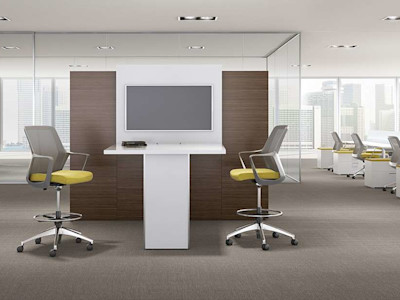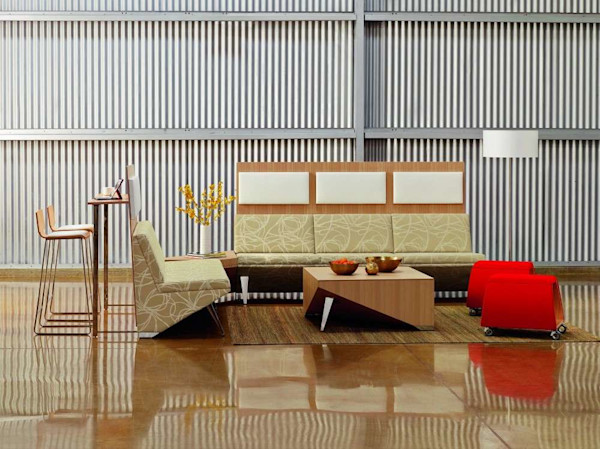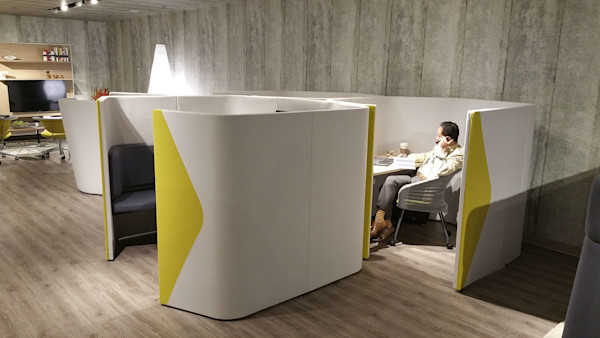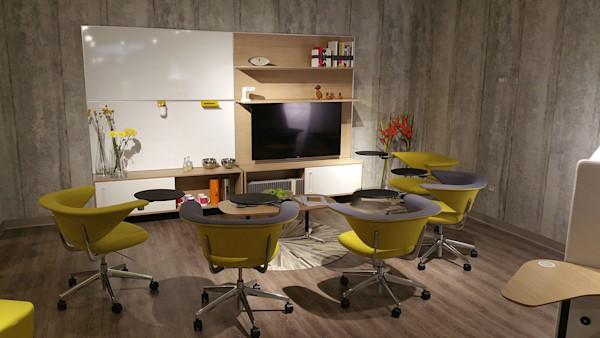Activity-Based Working 101

The focus of work for today’s employees is more different than ever before. With technology taking over more mundane tasks and analysis, the form the data we use in the workplace has changed, allowing workers more space for idea-based tasks, collaboration with colleagues, and creativity to find solutions for their employers and customers. So it’s no surprise the assigned desk in a static location in the office isn’t as effective for many employees as it once was. This is where Activity-Based Working (ABW) comes in. By providing your employees with a variety of locations to work based on the activity they’re engaged in, you’re facilitating their creativity and innovation in ways that haven’t been possible before, which expands the boundaries of their capabilities and work output. But what is ABW?

The Logistics of Activity-Based Working
Simply put, ABW throws out the location of a single worker in favor of a series of locations. It’s an office design for tasks rather than a landing place for bodies. In the past, conference rooms were located in one area, executives holed up in their offices in another, and the staff were lined up in neat rows of cubicles where they completed all their tasks, whether that meant conference calls, analysis of company data on their desktop computer, or designing presentations. Meetings were held in the conference rooms, and much of the back and forth between colleagues was done via email. It was both isolating and perhaps not the best use of their individual spaces.

ABW office design uses varying accommodations in a larger area, with workers using them as needed for their individual tasks. Such accommodations include:
Team desks for individual or collaborative work
Quiet rooms allowing for focused tasks requiring greater concentration or conference calls to minimize interruptions
Casual or lounge seating for small impromptu meetings or brainstorming sessions
Media space with lots of seating for collaborating on presentations or other media with large tables and wall screens
Technological connectivity throughout the entire space so mobile equipment can be quickly plugged in for immediate access to the company resources with little trouble

No more desktops left behind when a chat turns creative and no more napkins used to jot notes over coffee. Laptops, tablets, and mobile technology are the rule so multiple platforms are available on the fly.
Activity-Based Working in Practice
When an employee arrives for the workday, they choose the area most conducive to their immediate work, and throughout the day, move to the other areas as necessary. Productivity increases because workers don’t have to find ways to adapt a single space. Instead, different spaces help them complete the varying tasks. Collaboration is encouraged and facilitated in a place where they won’t interrupt anyone else. Shared ideas will flourish in this environment. By removing the static workspace and desegregating your workforce, the individual worker becomes less “I” and more “we.” As the team designates their collective space and moves around each other throughout the day. Keep in mind, that some individuals have ergonomic needs. You must still accommodate, and without a dedicated desk, you can lose track of space for employees. If there aren’t enough accommodations for the size of your workforce, your people could have difficulty finding any seating to complete their work, let alone the right place for the tasks on their plate that day. It has the opposite effect on productivity. If someone needs an area they can’t access due to overcrowding, you're wasting their time while they're forced to use another spot to work.

The Impact of ABW
Activity-based working isn’t just about the furniture of the workspace either. It’s a mindset from the top executives down to the least senior employee, and trust is key. Managers have to believe their team members will perform their tasks. They should allow them to work to the best of their ability. Team members have to trust their managers to give them mental room to work as well as physical room. No one wants to explain that their two hours spent brainstorming really wasn’t a rehash of last night’s TV viewing. Instead, a productive use of their mental capacity. Behavioral, technological, and physical attributes all come into play in an ABW environment, and the HR department needs to make guidelines for workers clear in their policies. IT needs to ensure the virtual worlds employees plug into are easy to access and run seamlessly. Management needs to foster an environment where employees are free to work. The challenges of an activity-based working environment are relatively new. However, with the growing and changing face of today’s workforce, there are plenty of opportunities. It's important to find that sweet spot where employees are engaged, inspired, and satisfied with their work and their ability to think outside the box. Today’s offices are a far cry from those cubicle farms with disconnected employees simply putting in the hours of physical presence. ABW can help workers remain present. As a result, they'll help grow and enhance your business.



